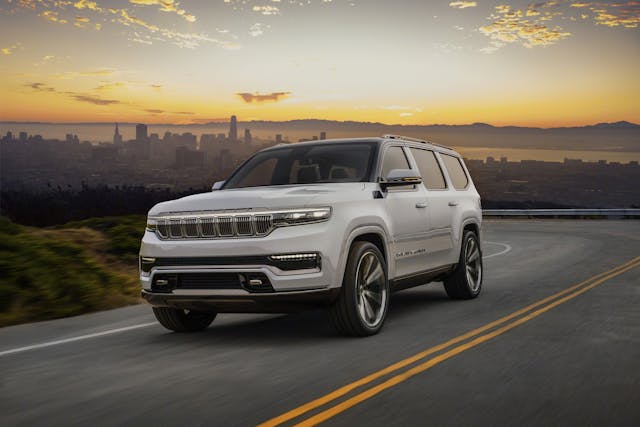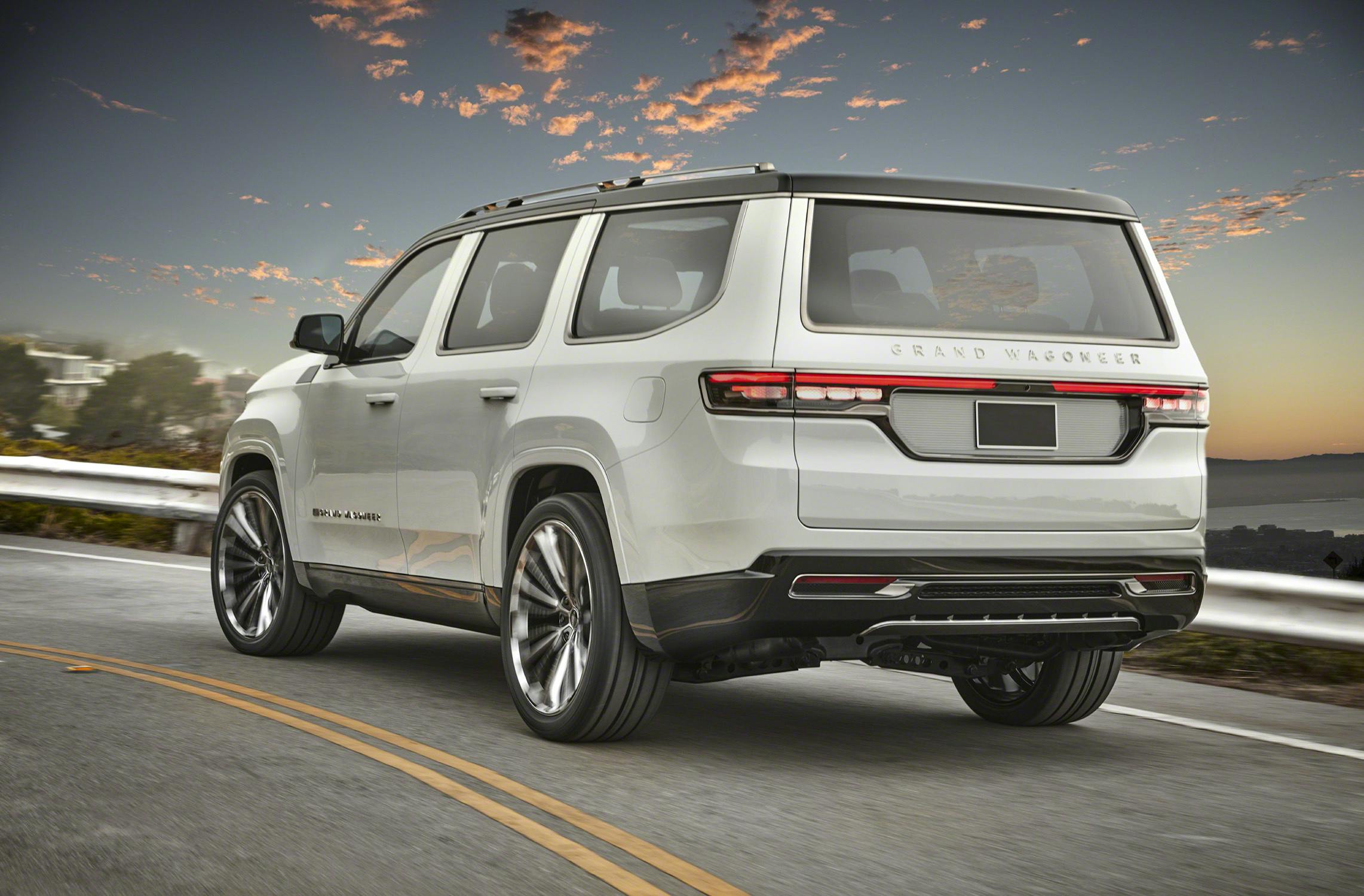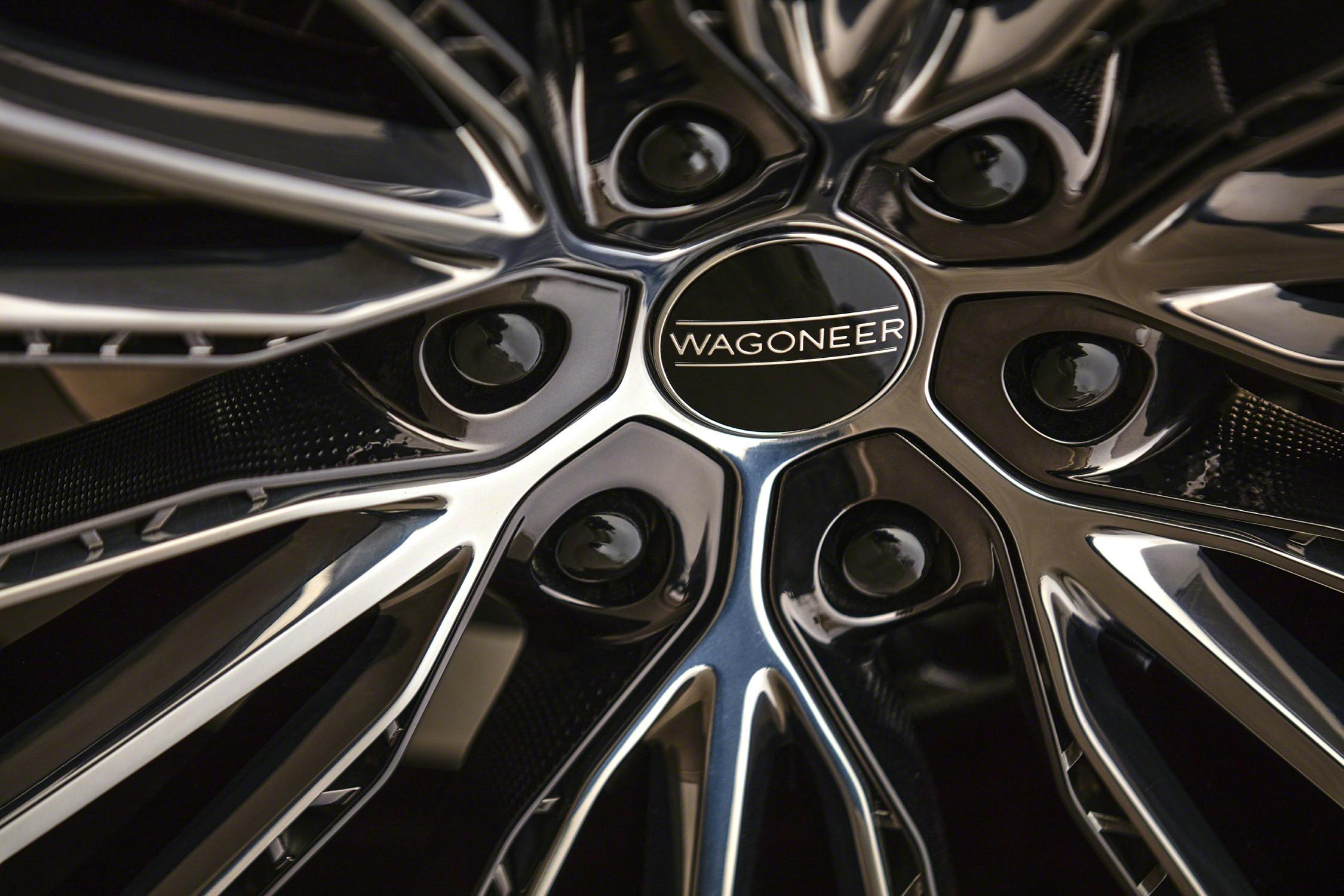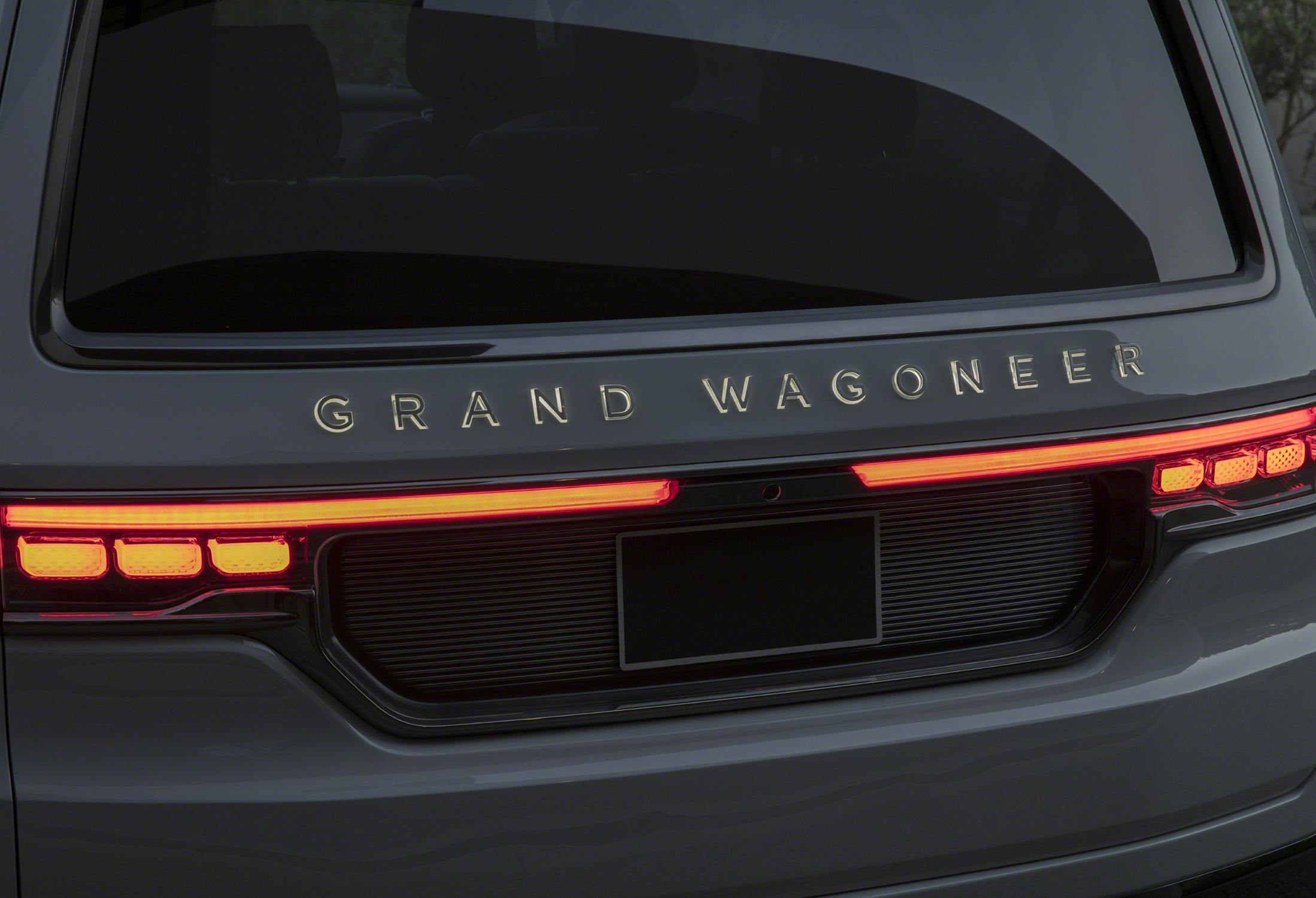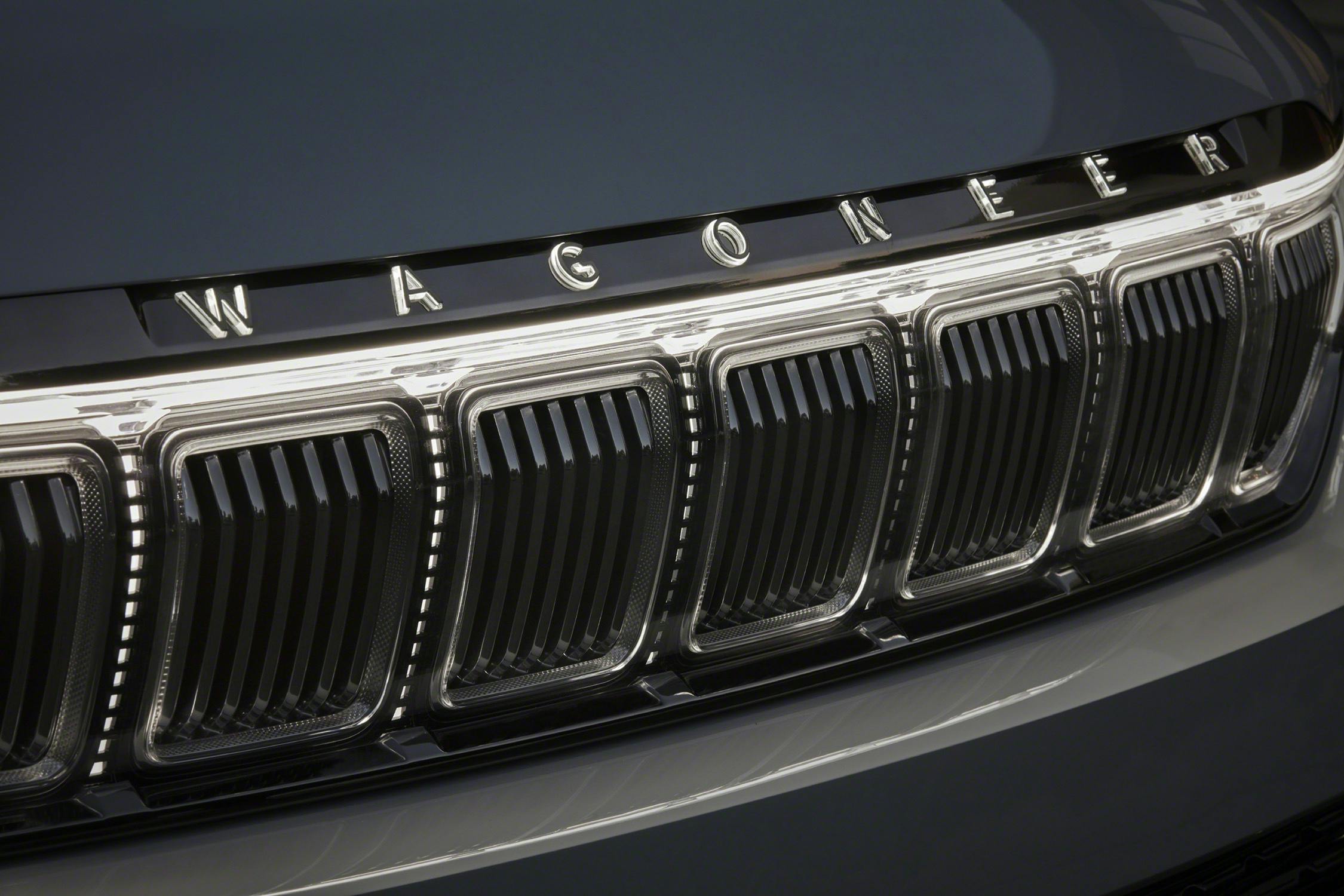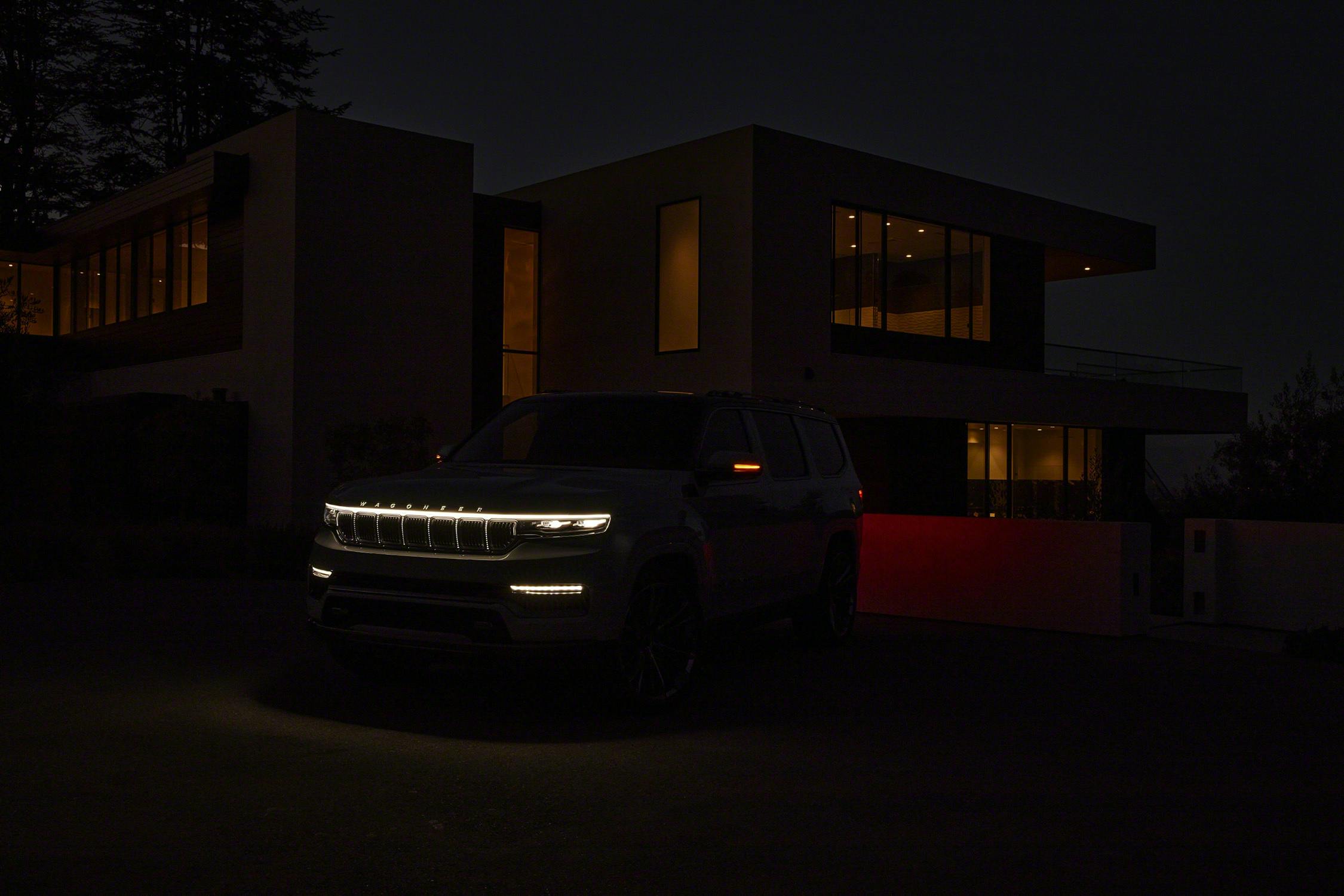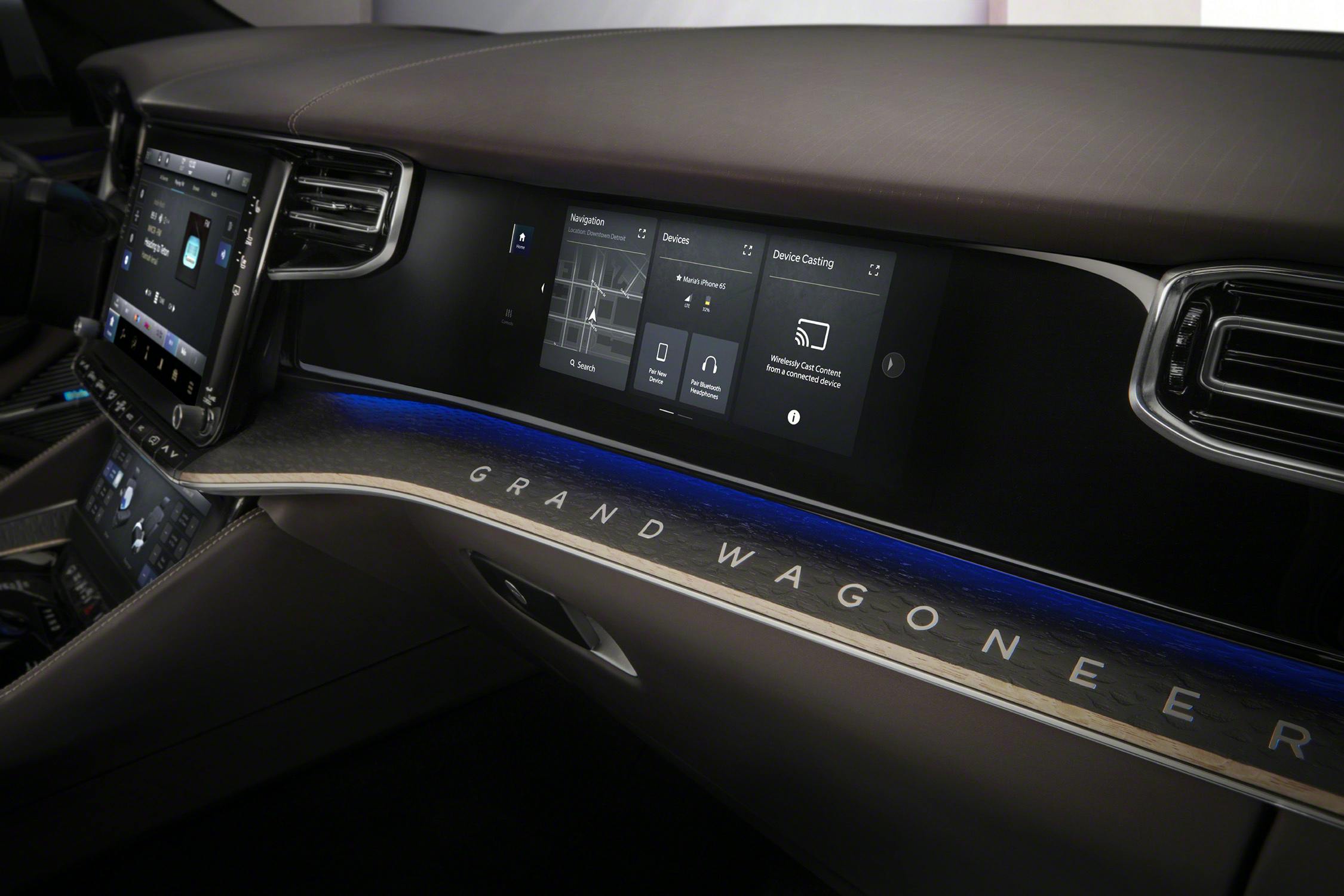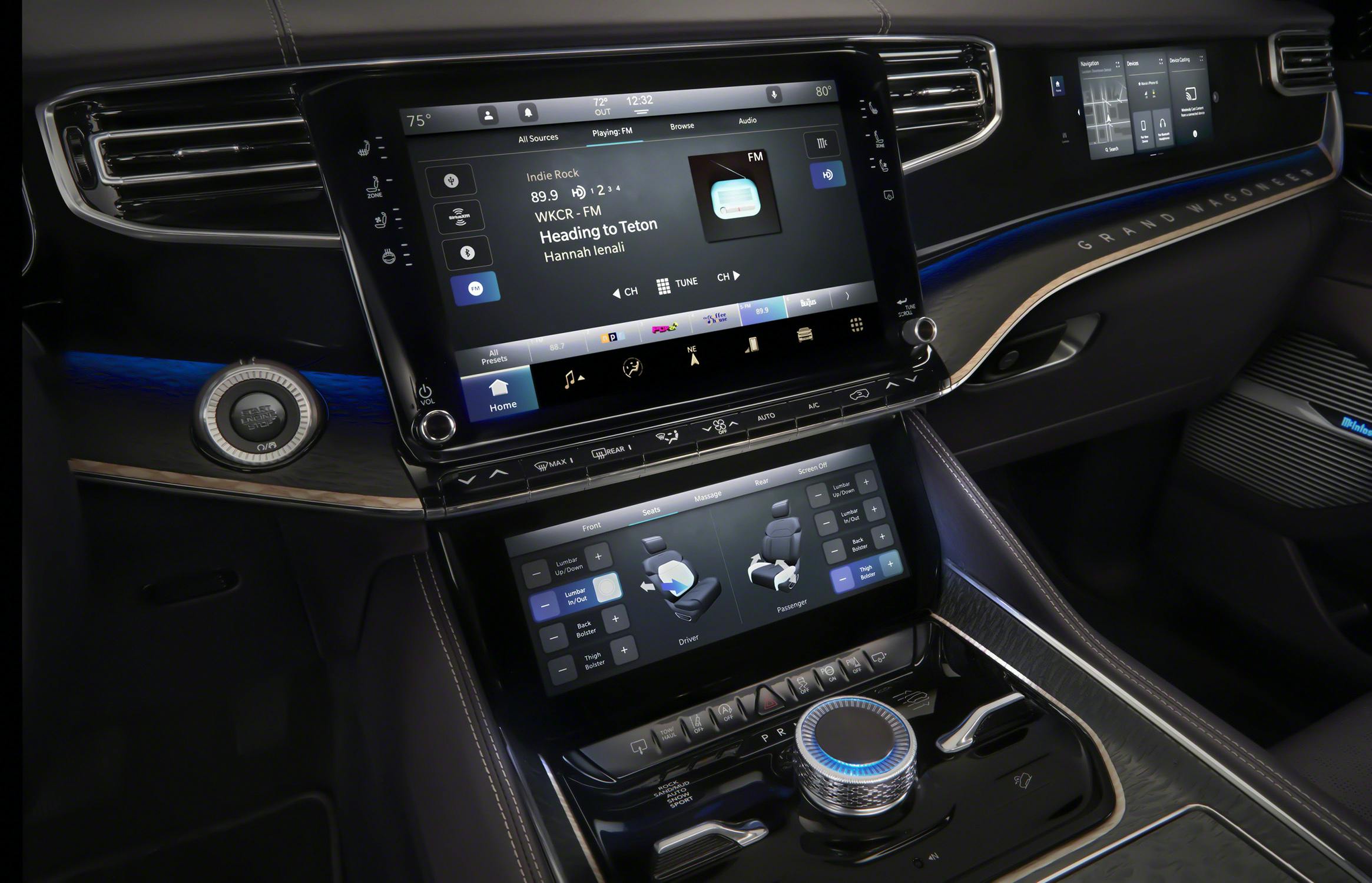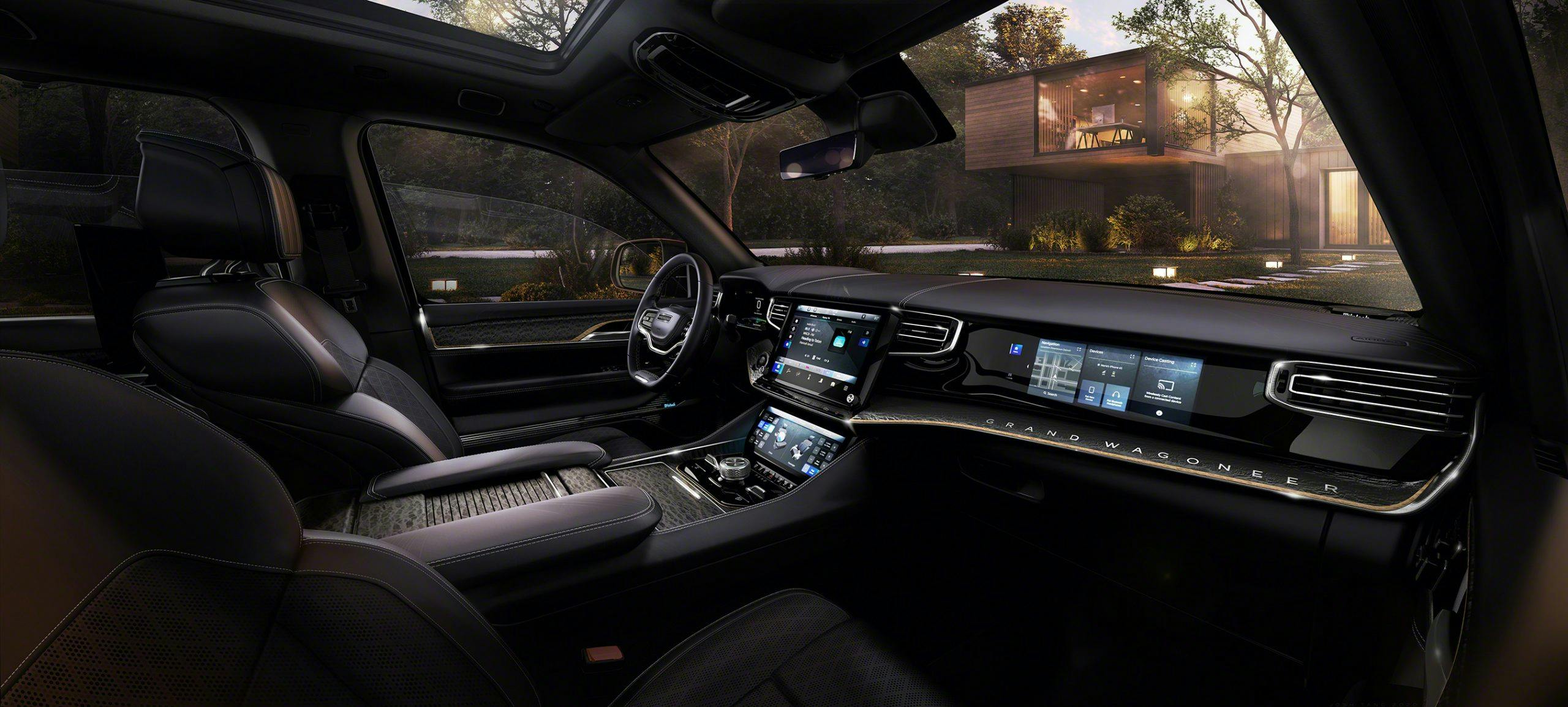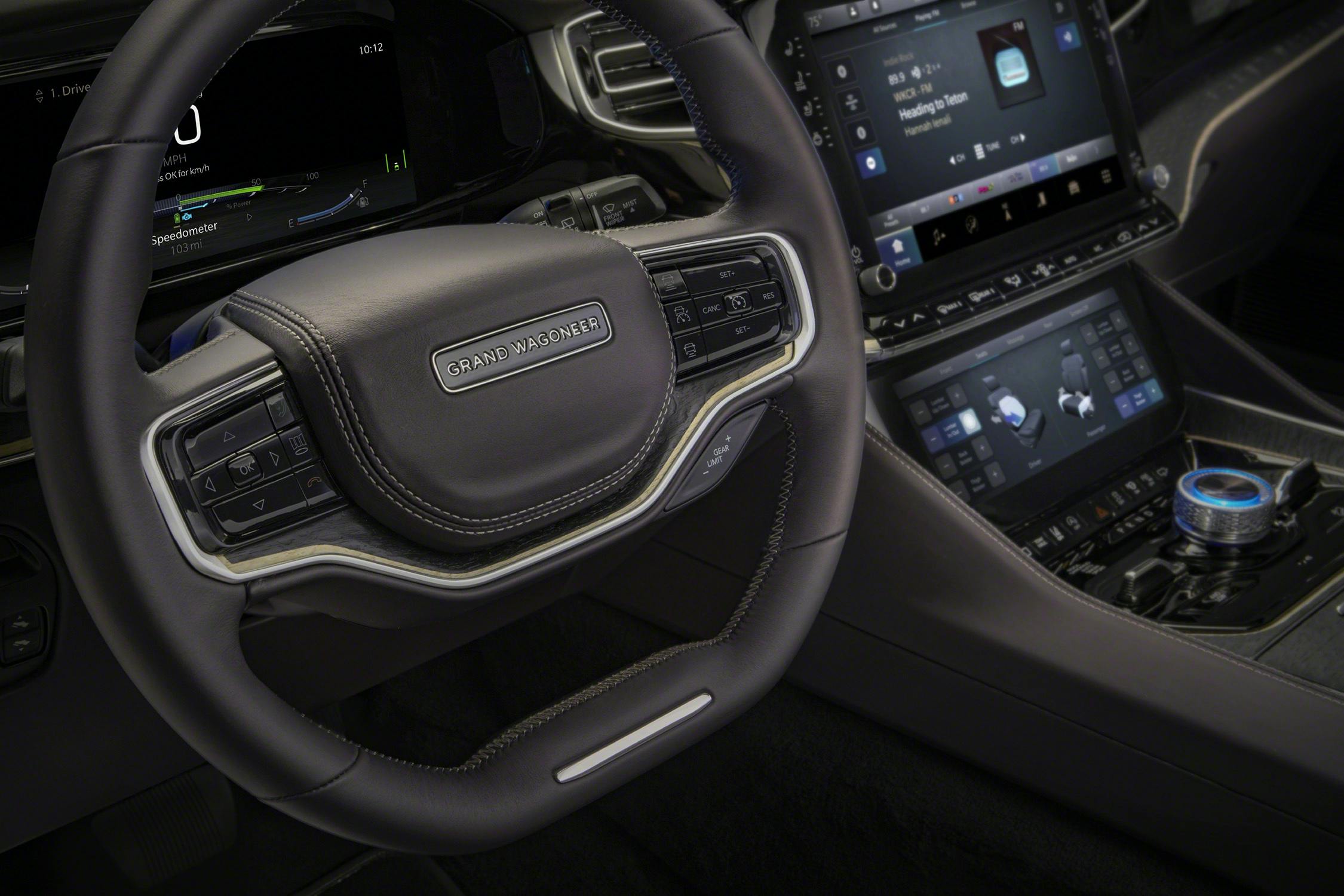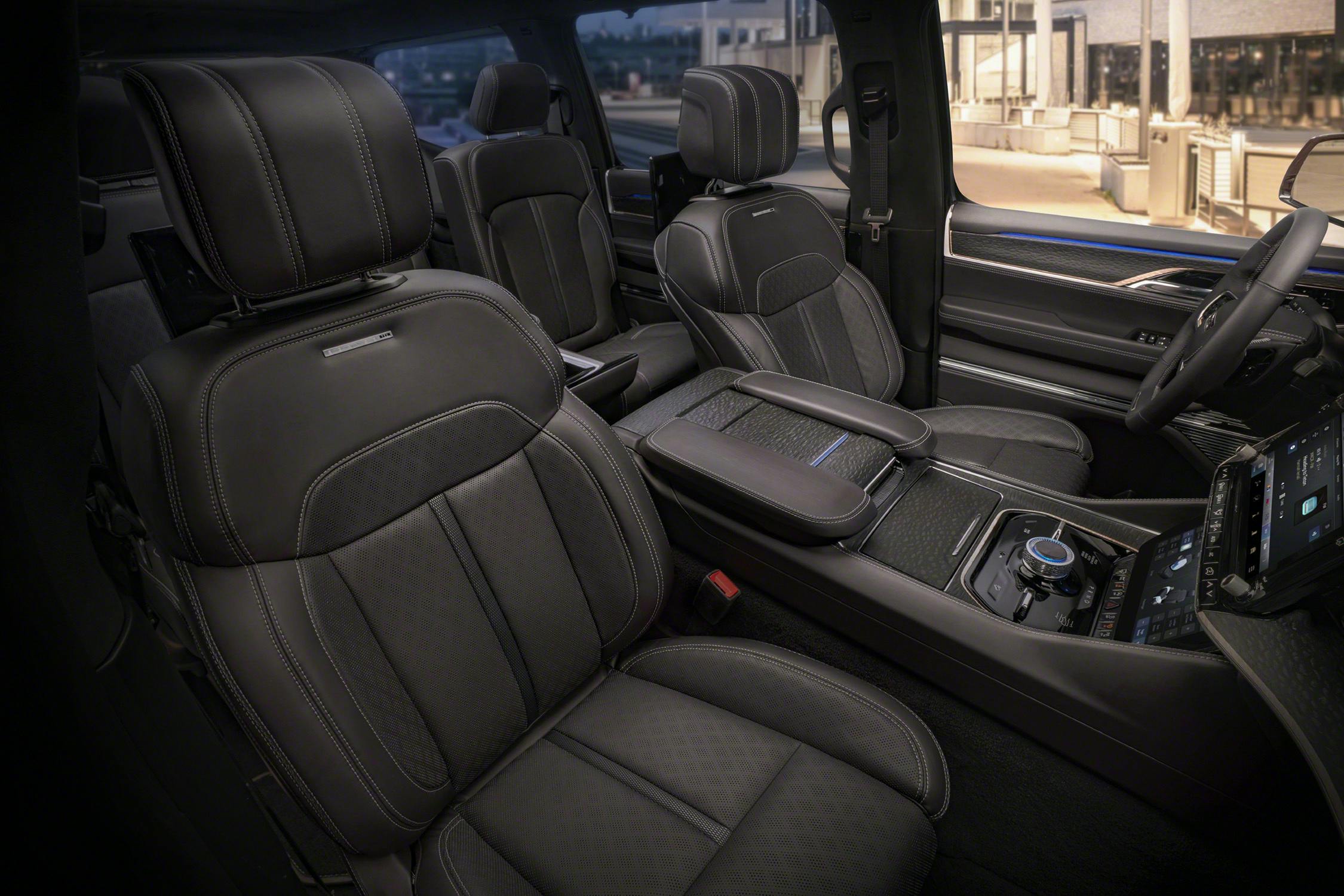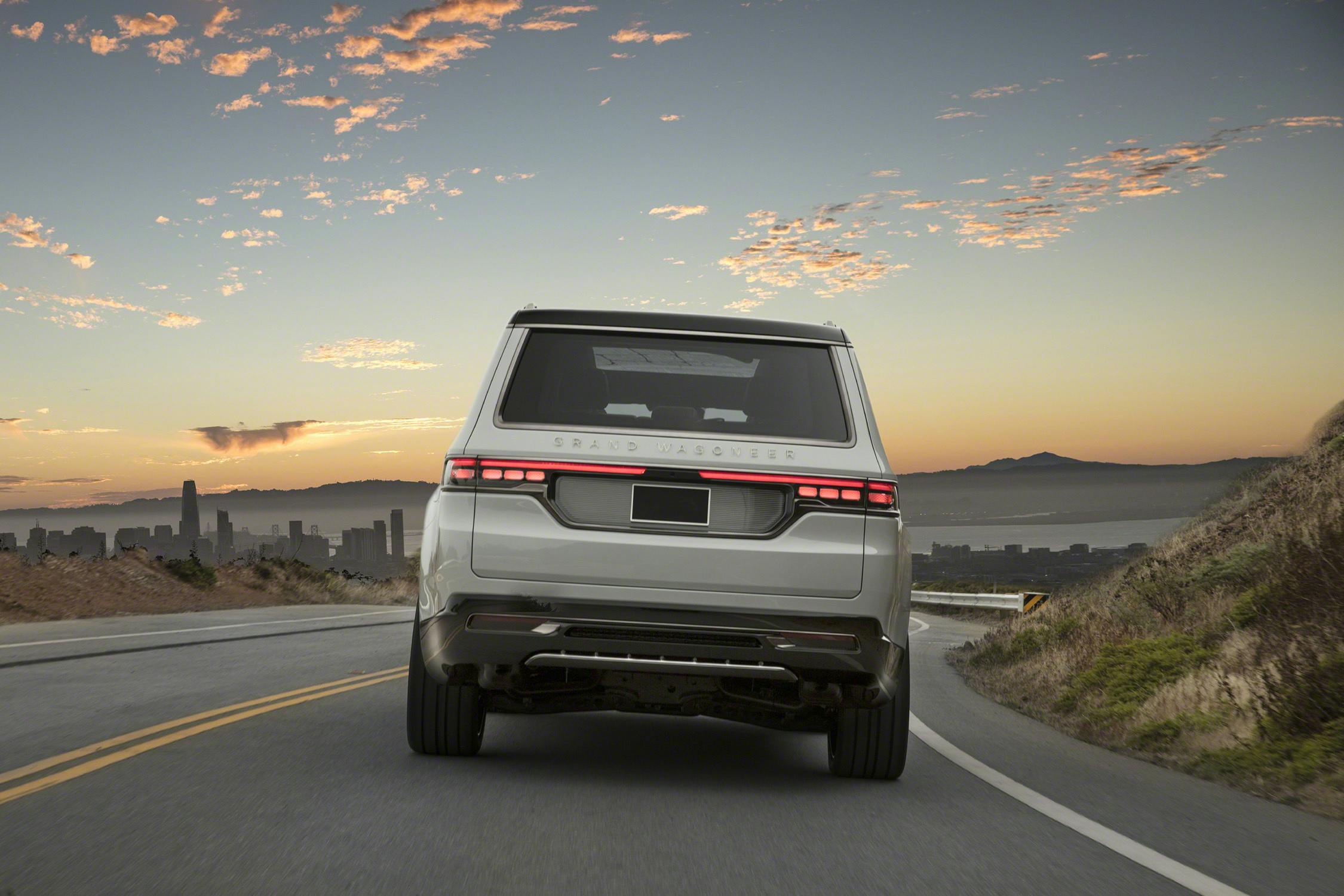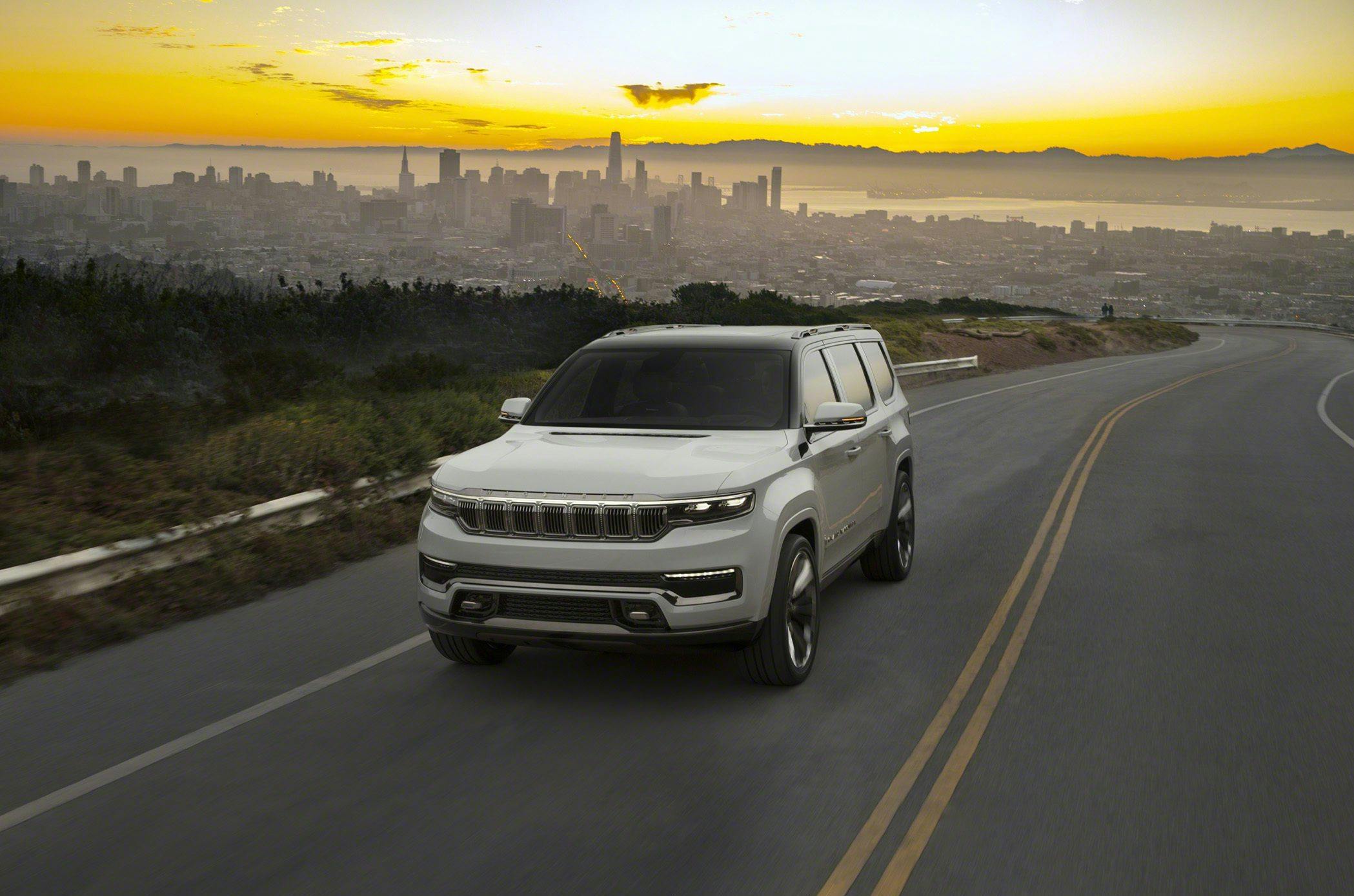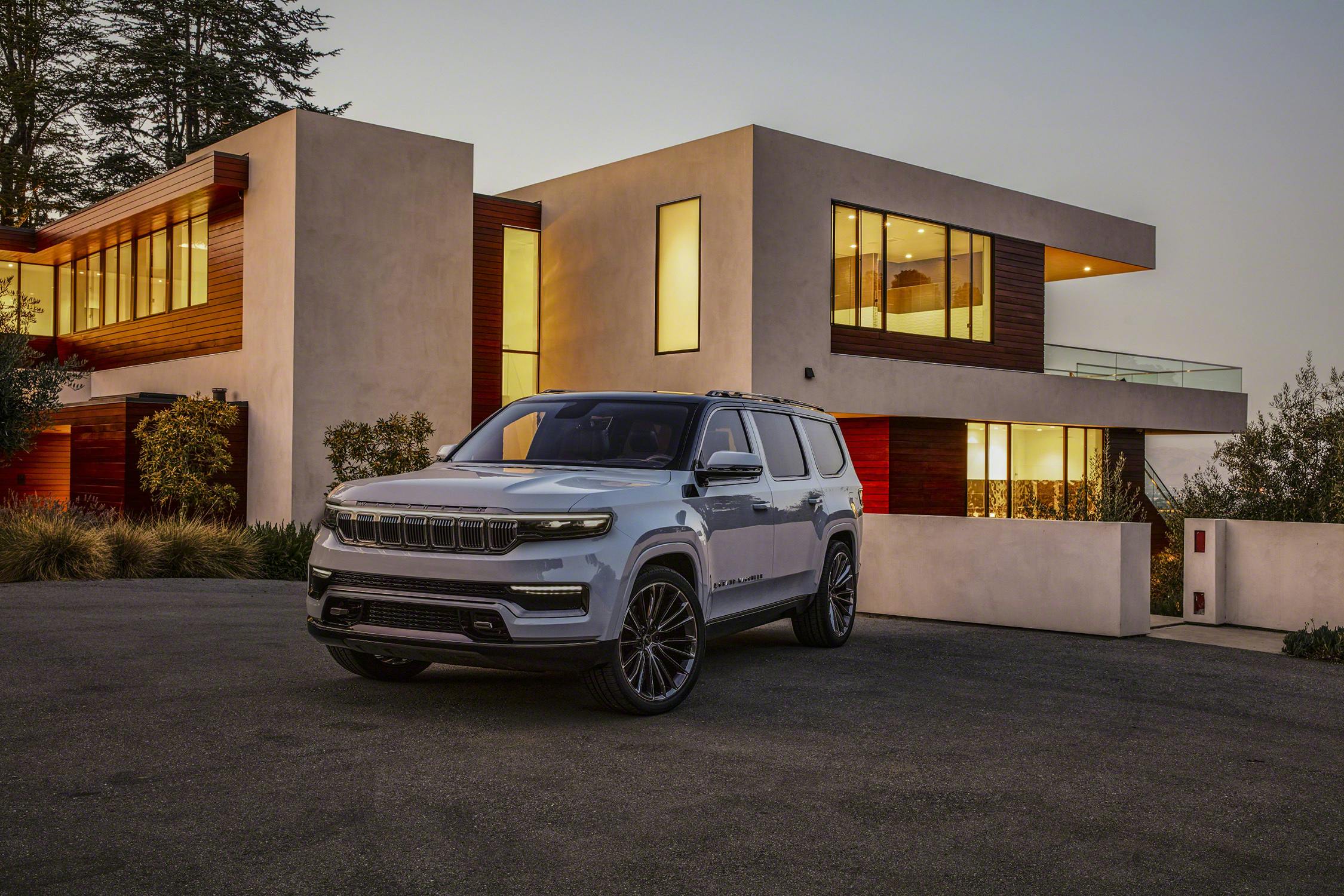Revealed: Jeep Grand Wagoneer Concept
Nantucket well-to-dos and Jackson Hole jet-setters, rejoice: The revival of the Jeep Grand Wagoneer begins now, with the unveiling of the Grand Wagoneer Concept pictured here. Jeep’s return—tardy though it may be—to the three-row premium SUV market doesn’t just revive a nameplate too-long absent from the brand’s portfolio; it signals a clear ambitions to challenge Chevrolet and Ford. And judging by the degree of luxury this concept presents, Jeep isn’t just getting its feet wet. The Grand Wagoneer will be wading upstream to battle premium brands like Lincoln, BMW, and Cadillac.
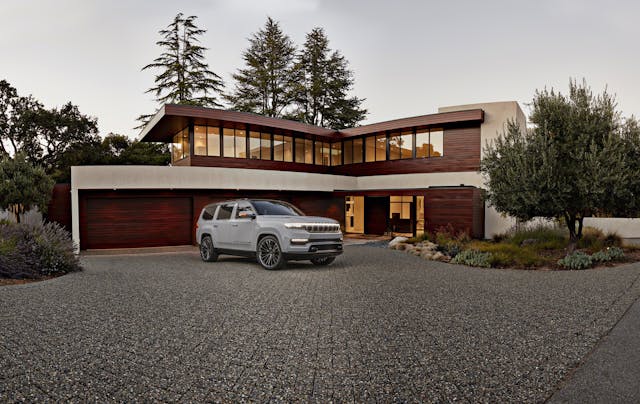
We like what we see here. Like the wood-paneled SJ that went out of production in 1991, expect the Grand Wagoneer to represent Jeep’s range-topping model. Seen here slathered in Arctic Ice exterior paint, the concept looks stately, spacious, and upscale. Importantly, it also looks closer to being production-ready than other large SUV concepts of late. (We’re looking at you, Cadillac Lyriq.)
Black accents along the A-pillar, roofline, both lower bumpers, and side skirts help visually balance what is otherwise a rolling wall of sheet metal. The bronze accents in the grille and roof rails are also a nice touch. This concept rides on 24-inch wheels with floating, three-piece wheel caps inscribed with WAGONEER in a handsome font lettered all over the vehicle.
On the nose and tail of the vehicle, that same nameplate (the back has room for the full GRAND WAGONEER badge) lights up. Horizontal lighting elements on both ends help accentuate the Grand Wagoneer’s width. Since impressing the aprés ski crowd is always top of mind in vehicles like this, a special “welcome” lighting sequence can be remotely activated as owners approach the car. As a nod to the wood-clad Wagoneers of yore, there are teak wood inserts in the LED headlamps, as well as in the tie-down holes on the roof rails. Sorry, folks—no plans for a woodie variant Wagoneer at this time. Don’t hold your breath.
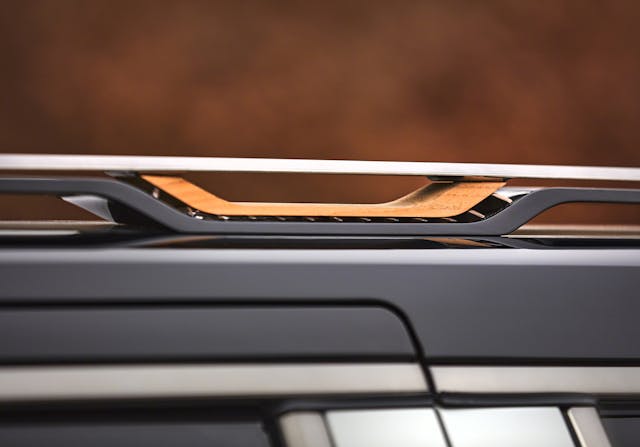
The exterior package is cohesive and smart, if a bit uninspiring. There are only so many ways to gussy up a boxy silhouette like this, so you’re forgiven if you see a Chevrolet Tahoe or a Lincoln Navigator when you squint. Signature design traits such as Jeep’s iconic seven-slat grille—illuminated here, of course—help the vehicle stand out.

The interior is magnificent. For the first time in the nameplate’s history, the Grand Wagoneer will offer a third row, upping the potential passenger count to seven with first- and second-row captain’s chairs. There’s also the first-ever passenger screen in an SUV—a massive, 10.25-inch unit that appears ready for navigation, device casting, and surely much more. That screen is just the tip of the digital display iceberg—Jeep says there’s a total of 45 inches of screen real estate in the front row of the Wagoneer. The other screens, from left to right: a 12.3-inch gauge cluster for the driver, a 12.1-inch horizontal touchscreen for normal center console infotainment duties, and a 10.25-inch touchscreen below for climate control and other interior amenities like massaging, heated, and cooled seats.
Second-row passengers can enjoy a 10.1-inch screen affixed to the back of each front seat, as well as a 10.25-inch screen housed in the back of the first-row center console. (We don’t know how to say this, but if everyone can plug in the navigation destination, maybe nobody can?) Regardless, 75 inches of screen in a three-row SUV is outrageous, no matter how you slice it. The screens will all run on the next-gen UConnect 5 software that’s five times faster than the current system, according to Jeep. The tech train rolls on with the sound system; Jeep tapped classic American luxury brand McIntosh for a 23-speaker sound system with a 24-channel amplifier. It’s the only vehicle to feature a McIntosh system.
There are premium, sustainable materials everywhere you look or touch. A synthetic material called PUR covers everything from the seats to the door and instrument panel surfaces. Where the synth-leather ends, heat-treated lacewood and brushed aluminum begin. A snazzy microfiber suede headliner and carpet made from recycled consumer materials round out the eco-friendly accoutrements inside. Between the large glass windows and the full-pane glass roof featured in this concept, there’s plenty of natural light. When the sun bolts, customizable LED mood lighting stands ready to take its place. Any two ways you slice it, expect this interior to be a delightful place to spend time.
This being a Jeep, there are Easter eggs aplenty. There’s a map of Detroit and the surrounding area (a nod to FCA HQ and the facility where the Wagoneer line will be assembled) embedded in the glass roof. The outer edge of the instrument panel is inscribed with EST. 1963, a nod to the first model year of the Wagoneer.

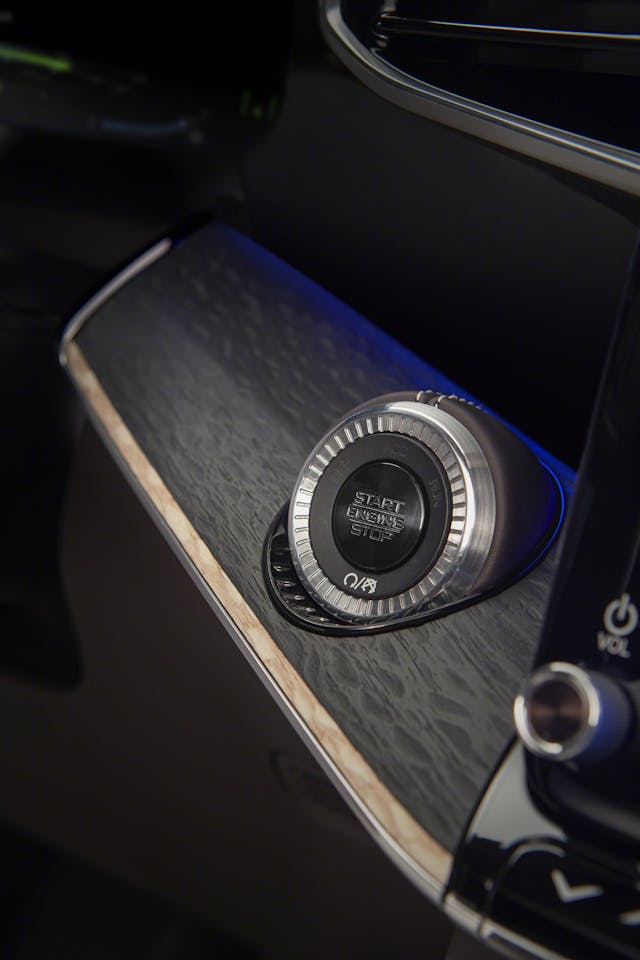
Jeep says that the Wagoneer will feature a plug-in hybrid drivetrain. This propulsion choice aligns with the brand’s continued push for electrification on every Jeep nameplate by 2022, an announcement made at this year’s Consumer Electronics Show in January. While there are no further details, we expect to see a new plug-in version of FCA’s eTorque mild-hybrid system hooked up to either the existing 3.6-liter Pentastar V-6, or the 5.7-liter Hemi V-8, both of which are currently offered in the Ram 1500. Electrification, according to Jeep, will bolster performance, 4×4 capability, and the fun-to-drive experience through more torque and better engine response. Expect the ZF’s much-loved eight-speed automatic to make an appearance here as well.
Speaking of 4×4 capability, Jeep says that when the production Grand Wagoneer arrives next year, it will offer three available 4×4 setups, although no further details were given at the time of the concept’s unveiling. This range-topping model will ride on an independent front and rear suspension with Quadra-Lift air springs for adjustable ride height and ground clearance. No word yet on whether solid axles front or rear will be offered. We wouldn’t bet on it, if competition such as the Chevy Tahoe and the Ford Expedition are anything to go by. These may be large vehicles born into off-road families, but make no mistake—they’ll spend almost their entire life on pavement. The production Grand Wagoneer is expected to share its chassis with the existing Ram 1500. The suspension setup and body-on-frame construction should do wonders for the towing and hauling capability of the vehicle.
Here’s the best part: This concept is just the beginning. Jeep says that the Wagoneer nameplate will grow into a whole family of vehicles that will seek to redefine “American Premium.” There are plans to launch both short- and long-wheelbase versions of the Wagoneer and the Grand Wagoneer in the coming years, and Jeep sees a big opportunity to leverage Wagoneer as a premium extension of the brand as a whole. It has worked elsewhere; the Ford Bronco now consists of a two-model family, with myriad trims and packages to fit just about every potential owner. We expect to see the Wagoneer brand fleshed out in the same way, albeit toward an increasingly tony customer base expanded beyond what the Grand Cherokee currently serves.
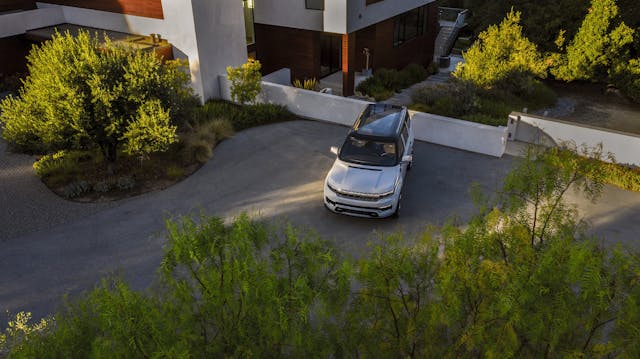
Production is slated to begin in 2021, with the first examples arriving in showrooms that same year. During the livestream reveal event this morning, Jeep confirmed that the normal Wagoneer will start around $60,000, while a fully-loaded Grand Wagoneer will crest the $100,000 mark.
While it certainly feels like Jeep has a long hill to climb, there’s a precedent to the brand being the king of the luxury SUV heap. Despite a modern brand ethos heavily rooted in dirt and the Rubicon trail, historically speaking, Jeep is no stranger to that top-end segment. The 1963 Wagoneer was a winner from the get-go. It was the first four-wheel-drive vehicle with an automatic transmission, the first to offer optional independent suspension, the first with an automatic full-time four-wheel drive system (from 1973 on) and a leader in ride quality for large vehicles at a time when machines of that ilk treated anything but raw functionality as an afterthought.

When the Grand Wagoneer debuted in 1984, the brand had seemingly conquered the admittedly small premium SUV mountain. Luxurious amenities such as leather, air conditioning, AM/FM/CB radios, and added sound insulation made the Grand Wagoneer the vehicle of choice of affluent folks with a penchant for outdoor activities across the nation. When production ceased in 1991, only then did the nameplate begin to fall from grace, passed up by the likes of Range Rover.
Don’t expect this new vehicle to feel anything like Jeep’s last attempt at a three-row, either. The Commander, built from 2005 to 2010, was a compromised package from the outset. A result of dealers demanding a three-row ride as an option at minimum, the Jeep Commander failed to wow customers and rode as poorly as a Chevy Tahoe from the previous generation. Delayed or not, the Wagoneer isn’t likely to repeat the mistakes of the ill-fated Commander.
Of course, things look a lot different today as the brand prepares to re-enter the big-box luxury arena. This segment is really shaping up with competition: The Germans have moved in, and a plucky young upstart from Korea seems hellbent on spoiling the party for everyone. Jeep will have to pull out all the stops with the Wagoneer and Grand Wagoneer nameplates in order to have any hope returning to its former glory. If this concept here is any indication, Jeep is on the trail to wild success.
